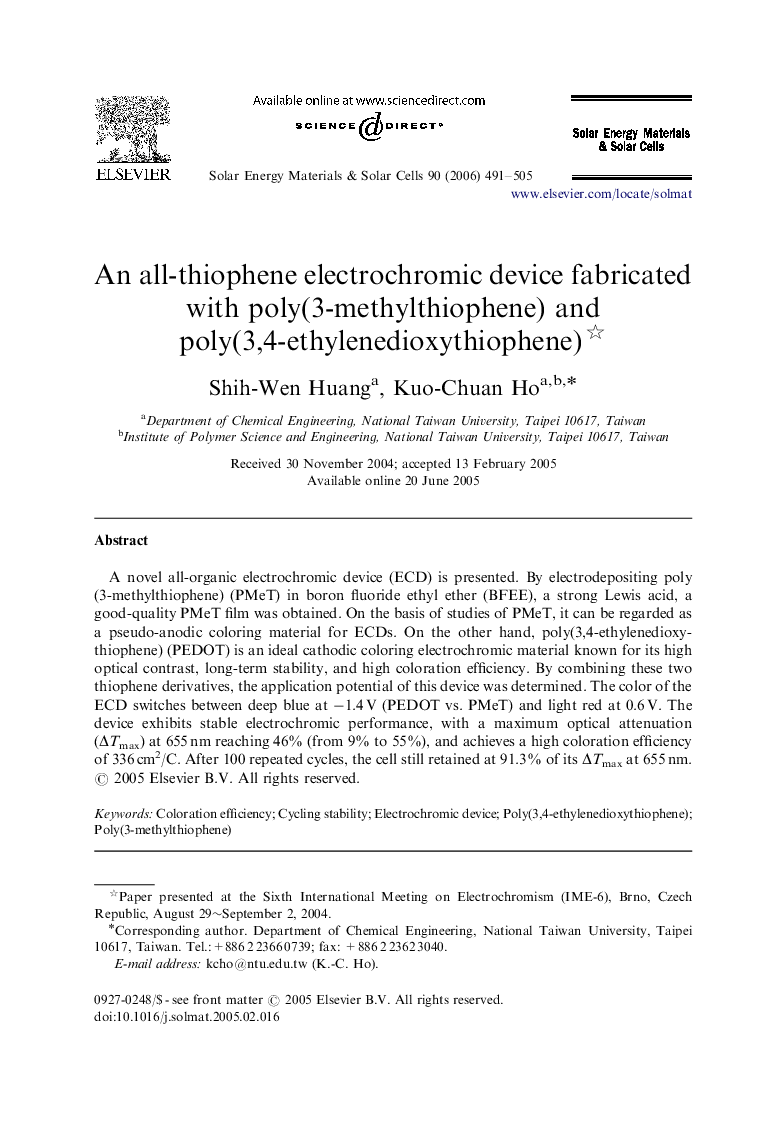| Article ID | Journal | Published Year | Pages | File Type |
|---|---|---|---|---|
| 80865 | Solar Energy Materials and Solar Cells | 2006 | 15 Pages |
A novel all-organic electrochromic device (ECD) is presented. By electrodepositing poly(3-methylthiophene) (PMeT) in boron fluoride ethyl ether (BFEE), a strong Lewis acid, a good-quality PMeT film was obtained. On the basis of studies of PMeT, it can be regarded as a pseudo-anodic coloring material for ECDs. On the other hand, poly(3,4-ethylenedioxythiophene) (PEDOT) is an ideal cathodic coloring electrochromic material known for its high optical contrast, long-term stability, and high coloration efficiency. By combining these two thiophene derivatives, the application potential of this device was determined. The color of the ECD switches between deep blue at −1.4 V (PEDOT vs. PMeT) and light red at 0.6 V. The device exhibits stable electrochromic performance, with a maximum optical attenuation (ΔTmax) at 655 nm reaching 46% (from 9% to 55%), and achieves a high coloration efficiency of 336 cm2/C. After 100 repeated cycles, the cell still retained at 91.3% of its ΔTmax at 655 nm.
